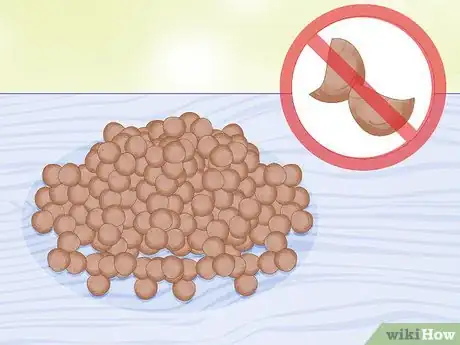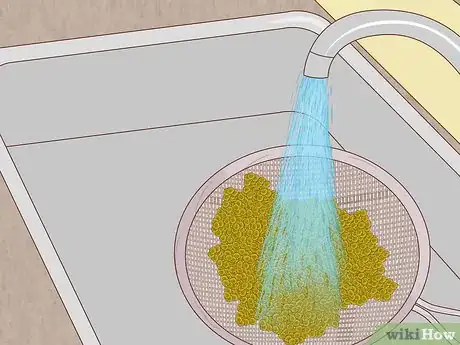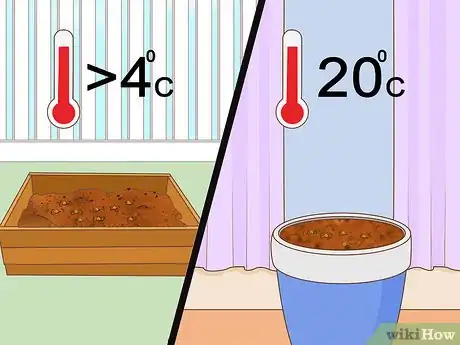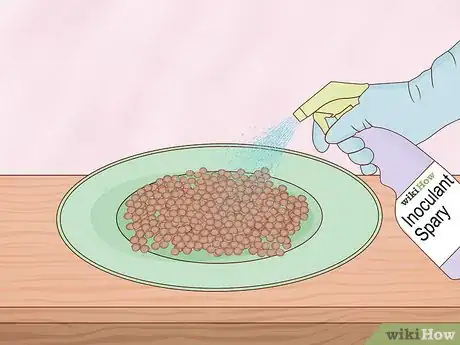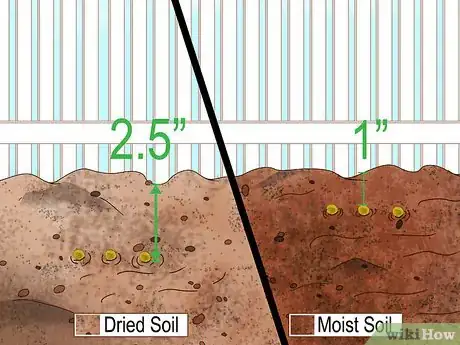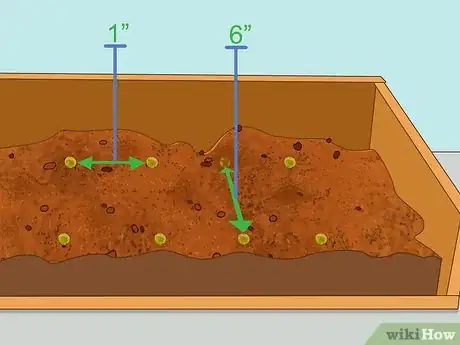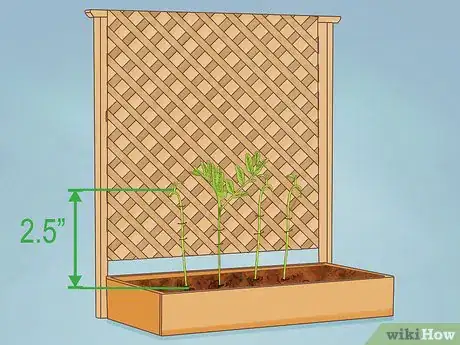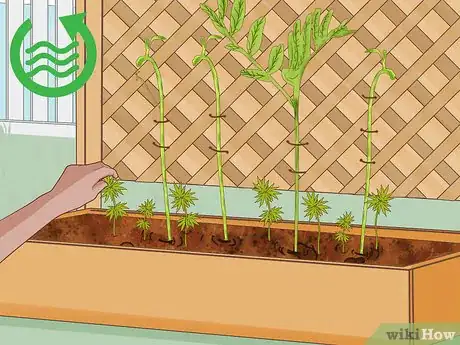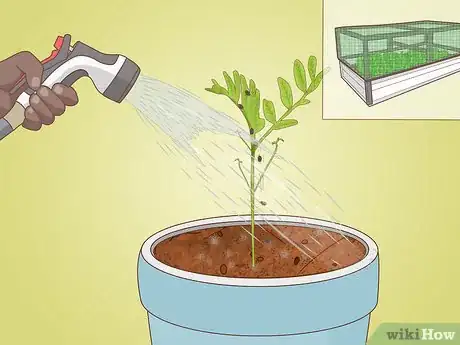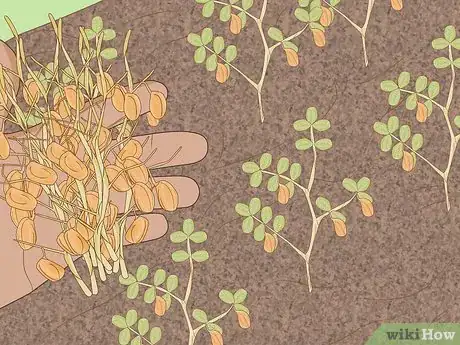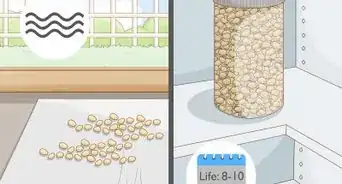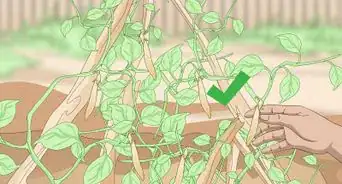This article was co-authored by Lauren Kurtz. Lauren Kurtz is a Naturalist and Horticultural Specialist. Lauren has worked for Aurora, Colorado managing the Water-Wise Garden at Aurora Municipal Center for the Water Conservation Department. She earned a BA in Environmental and Sustainability Studies from Western Michigan University in 2014.
wikiHow marks an article as reader-approved once it receives enough positive feedback. In this case, 93% of readers who voted found the article helpful, earning it our reader-approved status.
This article has been viewed 142,608 times.
Lentils are a super food that can give you a huge protein boost. Luckily for potential gardeners, they are also easy to plant and maintain. Start with quality seeds or dried lentils. Plant them in a container or garden location that gets plenty of sunlight and ample water. With any luck they should be ready to harvest in around 100 days.[1]
Steps
Selecting a Planting Space
-
1Get seeds or dry lentils. It may be difficult to find packaged lentil seeds at your local garden center. You may need to go to a specialty garden retailer or purchase from an organic seed business online. However, for planting purposes, any whole, dry lentils that you find in the grocery store will work just fine.[2]
- Split lentils will not work, so be sure to get whole lentils.
-
2Rinse and sort the seeds. Place the seeds into a colander and rinse them with a bit of water. Pick out and throw away any that are broken, cracked, or discolored.[3]Advertisement
-
3Plant in the early spring. Lentils thrive with the cool, crisp weather of March. Then, they reach maturity in the hot temperatures of summer. To keep your seeds alive, the ground temperature will need to be at least 40 degrees Fahrenheit (4 degrees Celsius) when you plant. If you have a frost after planting, don’t worry as most seedlings will survive this, even if they have to restart from the roots.[4]
- If you want more flexible planting options, lentils can also be planted indoors as long as the room temperature is kept around 68 degrees Fahrenheit (20 degrees Celsius). In colder seasons, some people use indoor garden lighting to maintain a consistent temperature.[5]
-
4Choose a sunny, well-drained location. Lentils grow well in both open gardens and containers. The key is to provide the plant with plenty of full sunlight. It helps to plant them alongside low lying plants so that the lentils are not overshadowed. Make sure that the soil stays moist without accumulating standing water on the top, as that can rot out the roots.[6]
- If you choose to plant your lentils in a container, choose one that is at least 8 inches (20 cm) deep to allow for full root maturity.[7]
- If you are concerned about the acidity or alkalinity of your soil, get a quick pH test from the garden store. Lentils grow well in the pH range of 6.0 to 6.5.
Planting Lentils
-
1Pretreat with an inoculant. Before you plant your seeds, sprinkle or spray them with a healthy mixture of bacteria, also called an inoculant, purchased from your garden store. A general use inoculant labeled for peas and beans will work just fine. This pretreatment helps your lentils to sprout additional nodules, or extensions, in their roots. This will make them more resistant to weather changes and will produce a better harvest.[8]
-
2Plant seeds at least 1 inch (2.5 cm) deep. If your soil is moist and in good condition, plant the seeds at a depth of 1 inch (2.5 cm). If your soil is drier on top, then go to a maximum depth of 2.5 inches (6.4 cm). Don’t exceed this as the seeds will not be able to sprout if they are buried too deep.[9]
-
3Follow a planting arrangement. In a container, try to spread your seeds out at least 1 inch (2.5 cm) apart. If you are planting in rows follow this same guideline and keep the rows 6 inches (15 cm) apart as well. With this planting sequence it is possible to yield around 1 pound (0.45 kg) of dry lentils per each 100 square feet (9 square meters).[10]
Caring for Your Plants
-
1Add a trellis for mature plants. Fully grown lentils can stand over 2.5 feet (76 cm) tall. If they droop, then their flowers and seed pods can break off or touch the ground. Add a low trellis to support them and wind the plants through the gaps. Or, secure them to bamboo supports with cotton string.[11]
- To create a quick trellis, get a few bamboo stalks. Stick them into the ground near the lentils. Hook the lentils to the stalks with cotton string. Then, attack the stalks to one another using cotton or nylon cord.[12]
-
2Water them twice a week. Like other plants that enjoy the heat, lentils are fairly drought tolerant. But, they’ll grow the best if you water them just to the point of moistening. If you press your finger against the soil, it should come away damp but no water should rise from the pressed area.[13]
-
3Weed and thin the planting area regularly. Lentils can be quickly killed off and blocked out by competing weeds. To prevent this, spend a bit of time each week picking out any weeds from your planting area. If the lentils are growing on top of one another, take this opportunity to thin them out as well to protect your final harvest.[14]
- More air circulation will also lessen the possibility of fungus and other disease that thrive on stagnant soils.
-
4Remove any pests. Tiny, pear-shaped, sap-sucking insects called aphids, in particular, are drawn to lentils and may eat them. If you see any aphids, get a bottle or a hose and spray them with water until they fall off. If you see weevils on your crops, then pull out any affected plants and discard them quickly.[15]
- If deer or other animals begin to intrude on your lentil patch, them create a fenced in area or place a light netting on top of the plants.
-
5Harvest them 80 to 100 days after planting. Go through your lentil patch and cut the plants off at the soil line when the bottom third of the pods begin to sound shaky when rattled. They may also look yellow-brown in appearance. Then, break open the pods to remove the seeds from the interior. Let them air dry for a bit before rinsing them out.[16]
- You can store the harvested lentils in an airtight container until you plan to use them.
Community Q&A
-
QuestionCan I grow lentils just with water?
 NinoxTop AnswererYes, lentils can grow with water, but the taste of lentils cultivated with water can be blander.
NinoxTop AnswererYes, lentils can grow with water, but the taste of lentils cultivated with water can be blander. -
QuestionAre the red lentils split lentils? How many square meters is needed to grow 1 kg of lentils?
 NinoxTop AnswererRed lentils are split lentils, they are round lentils. If you want to have 1 kg (2.2 lbs.) of lentils, you will roughly 7 square meters (75 square feet).
NinoxTop AnswererRed lentils are split lentils, they are round lentils. If you want to have 1 kg (2.2 lbs.) of lentils, you will roughly 7 square meters (75 square feet). -
QuestionHow long does it take for a lentil seed to start growing?
 Community AnswerThe lentil seeds takes around 1-2 days to germinate and 2-6 days for roots/leaves to appear.
Community AnswerThe lentil seeds takes around 1-2 days to germinate and 2-6 days for roots/leaves to appear.
Warnings
- Lentils grow best when planted alongside cucumbers or summer savory vegetables. Avoiding planting them next to aromatic plants, such as onions or garlic, as this can impact their final flavor.[17]⧼thumbs_response⧽
References
- ↑ https://www.rodalesorganiclife.com/garden/how-to-grow-lentils
- ↑ https://www.rodalesorganiclife.com/garden/how-to-grow-lentils
- ↑ http://www.seriouseats.com/2011/04/how-to-grow-bean-sprouts-in-a-jar-slideshow.html
- ↑ https://www.rodalesorganiclife.com/garden/how-to-grow-lentils
- ↑ http://www.harvesttotable.com/2009/07/how_to_grow_lentil/
- ↑ https://www.rodalesorganiclife.com/garden/how-to-grow-lentils
- ↑ http://www.harvesttotable.com/2009/07/how_to_grow_lentil/
- ↑ https://www.rodalesorganiclife.com/garden/how-to-grow-lentils
- ↑ https://hort.purdue.edu/newcrop/afcm/lentil.html
- ↑ https://www.rodalesorganiclife.com/garden/how-to-grow-lentils
- ↑ http://www.harvesttotable.com/2009/07/how_to_grow_lentil/
- ↑ http://www.finegardening.com/build-bamboo-trellis
- ↑ http://www.harvesttotable.com/2009/07/how_to_grow_lentil/
- ↑ https://www.rodalesorganiclife.com/garden/how-to-grow-lentils
- ↑ http://www.harvesttotable.com/2009/07/how_to_grow_lentil/
- ↑ https://www.rodalesorganiclife.com/garden/how-to-grow-lentils
- ↑ http://www.harvesttotable.com/2009/07/how_to_grow_lentil/
About This Article
To grow lentils, sow the seeds in your garden in early spring when the ground temperature is about 40 °F. Choose a sunny spot with well-drained soil and plant the seeds at least 1 inch deep. Plant the seeds in rows, spacing them at least 1 inch apart. Be sure to water them twice per week and pull out any weeds that grow in the area around them. Lentil plants grow relatively fast -- you should be able to harvest your lentils 80 to 100 days after planting the seeds! For more tips from our Horticulturist reviewer, including how to harvest your lentils when they're ready, read on!
